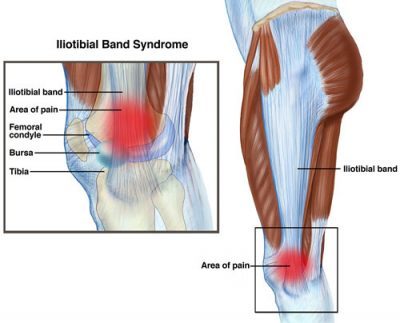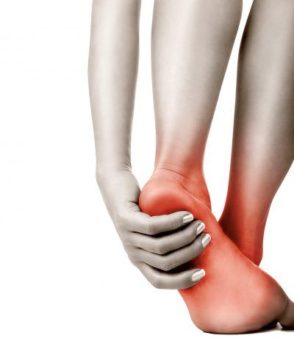Increasing running distance, without increasing injury risk
Winter is well and truly over and the excuse ‘its too cold to train’ is no longer valid. With numerous fun runs, running festivals and marathons coming up over summer, the running season is here!
As a result many of you will increase your amount of running. Whether you are a novice runner just looking to shed that winter coat or an experienced runner preparing for an ultra-marathon, increasing your running unfortunately is often associated with injuries.
70% of all sporting injuries occur to the foot & lower limb and the majority of these are overuse injuries, many of which can be prevented. Overuse injuries are sustained from repetitive strenuous actions, and sudden increases in these actions further increase your risk of injury. Running is a very repetitive activity, putting the same strain on the same parts of your body step after step, run after run. Doing too much (distance), too soon, is the number-one cause of running injuries.
If you are returning from a break or starting to run more than you ever have before, you are in a potential injury danger zone. Your body needs time to adapt and condition itself to the increased stresses you place on it with each run. Here a 5 tips to help you increase your running distance:
1. Take it slow
The well-known ‘10 percent rule’ is a simple guide for increasing your distance. Build your running distance by no more than 10 percent per week. So if you run 10km’s the first week, run 11km’s the second week, about 12km’s the third week, and so on. However, 10 percent increases may still be too much for some. Use the 10 percent rule only as a guideline and…
2. Listen to your body
Overuse injuries experienced from running don’t just make surprise visits. There are often warning signs: persistent aches, soreness’s and pain will let you know that you need to stop and rest. If the pain is still present as you return to running, then you need to seek professional advice. A podiatrist and physiotherapist with good knowledge in sports medicine will be able to provide you with advice on possible causative factors and how to manage these. The approach of “I’ll run it off” does not work and on most occasions you will only aggravate the injury or cause additional injuries as you attempt to change your running technique to compensate. Do not ignore the early signs!
3. Focus on technique
When returning to, or starting off with running you should aim to have a relaxed, pain-free technique. It is important to achieve this before increasing your distances. Studies have found that runners who habitually rearfoot strike have significantly higher rates of repetitive stress injury than those who mostly midfoot-forefoot strike (Daud et al, 2012). There is much controversy about what is the best running technique. Running technique is individualised. Legs length, foot posture, height and weight are different from person to person, so a generic gold standard running technique does not exist. The only suggestion we can make is based on what the research says: ‘increasing cadence can reduce the load in certain tissues’. Maintaining a constant cadence – the rate at which your feet strike the ground measured in strides per minute – prevents your legs from spending too much time supporting your body weight with each step.
4. Get good running shoes
Buying the right running shoe can be daunting. Running shoes have changed a lot over the years, and there’s a huge variety of models, brands, and types to choose from. There are even minimalist shoes designed to mimic barefoot running (although there’s no scientific evidence that using shoes decreases injury risk).
Getting a good running shoe is of prime importance and plays an important role in reducing injury risk. It is imperative shoes are selected taking in to account the runnering terrain, distance, weight, foot posture & running style
Terrain
Largely affects the outsole of the shoe – those running the goat track or similar may benefit from a trail shoe with a running midsole, but more rugged tread
Distance
Longer distance runners need to look at additional features in shoes such as gel or additions to the midsole to assist with durability
Weight
Often overlooked in shoe selection, heavy runners need a more dense (firmer) midsole than lighter runners. A heavy runner will compress a soft midsole quickly, getting little shock absorption from it and wearing it out quickly. A light runner will have difficulty in compressing a firm midsole and again get minimal cushioning benefits.
Foot type
Runners should be aware of what foot type they have – whether the foot rolls in (pronates) or rolls out (supinates) excessively or is neutral. An experienced and qualified sport store staff member can give you some idea of foot type but runners should see a sports podiatrist for specific advice and footwear script to aid in appropriate shoe selection. An excessively pronated foot is unstable, requiring more ‘work’ from the lower leg musculature and can predispose to injuries such as plantar fasciitis (heel pain), shin splints and knee pain. An excessively supinated foot (more correctly termed ‘under pronator’) is a much rarer beast and frequently incorrectly diagnosed. It is a difficult foot type to deal with and predisposes to shock type injuries, including stress fractures, heel, ankle, knee pain
Running Style
The majority of runners land on the heel and most shoes are designed to accommodate this. Some are mid foot or forefoot strikers though and require different features, some shoe brands cater specifically for these foot types, check with your Podiatrist or Fit Technician when purchasing footwear.
5. Mix it up
Running is tough on the body. So change it up regularly to help keep a healthy balance and reduce the risk of those overuse injuries. Swimming, cycling, elliptical training, and rowing will burn a lot of calories and boost your aerobic fitness.
If you experience pain when running, DO NOT ignore it. Stop, rest and if it persists seek advice from a professional.
Common overuse injuries experienced by runners:
- Plantar fasciitis (heel pain)
- Achilles tendinitis
- Calf strain
- Medial tibial stress syndrome (shin splints)
- Patellar femoral syndrome
- Iliotibial band syndrome
- Patellar tendinitis












